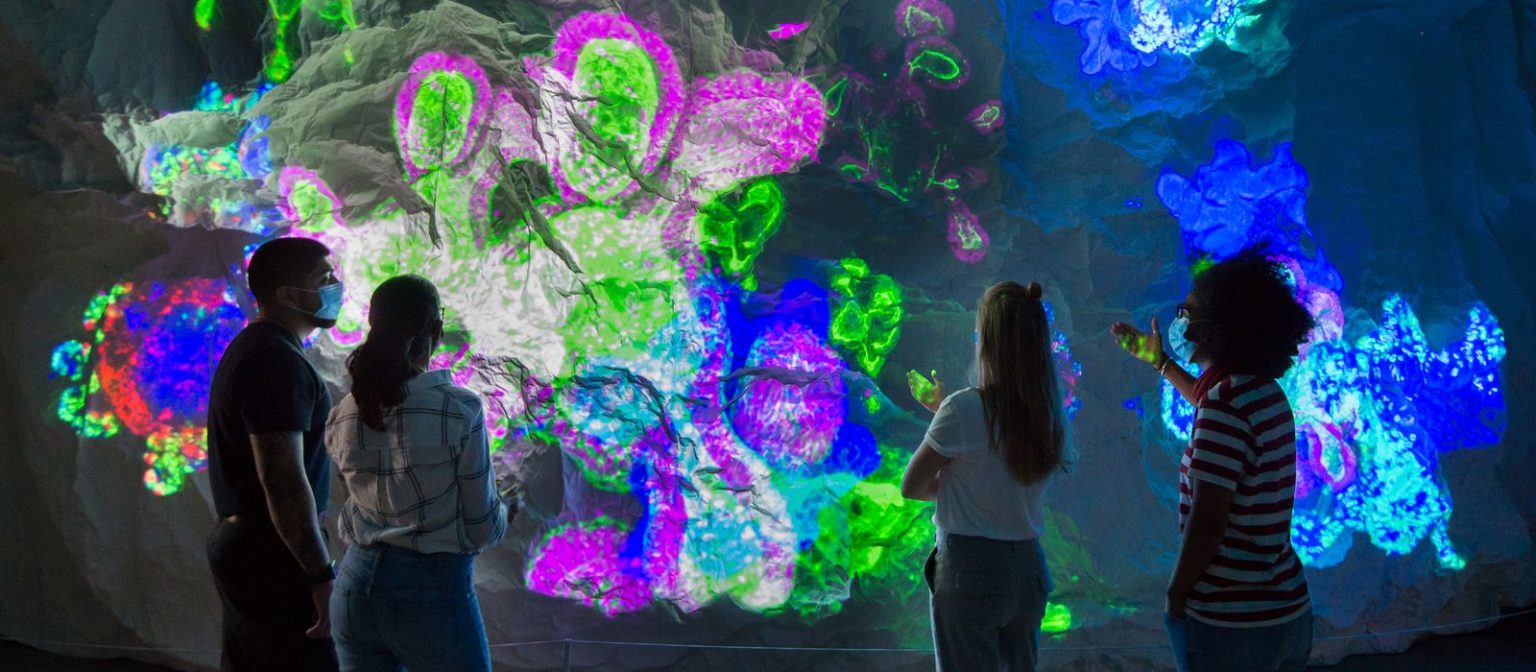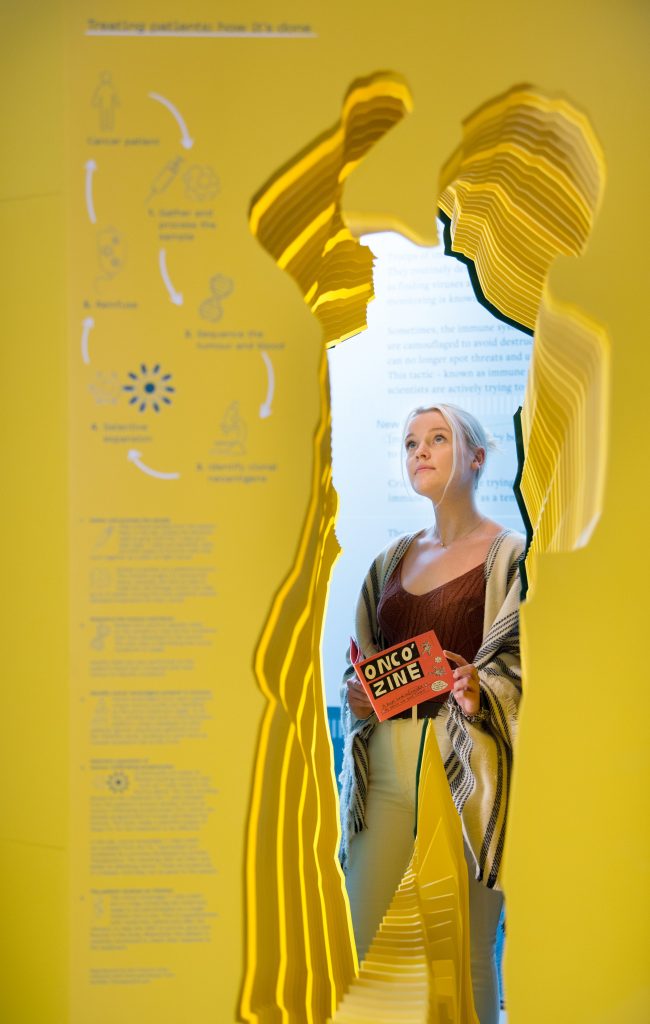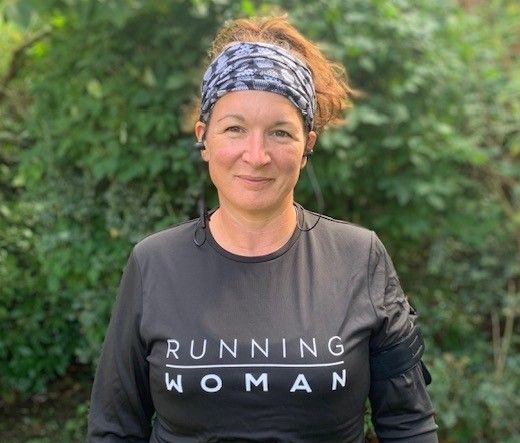Enjoy this article?
This area of Museums Journal is normally just for members. Join the MA to get full access to the latest thinking and trends from across the sector, case studies and best practice advice.

One in two people will develop cancer at some point in their lives, according to the charity Cancer Research UK.
With so many people affected, the exhibitions team at the Francis Crick Institute in London knew that developing its latest exhibition, Outwitting Cancer: Making Sense of Nature’s Enigma, presented both an opportunity and a challenge.
A subject such as cancer is relevant to so many, but presenting cutting-edge research on a topic that is so sensitive and emotive meant it was essential we worked with people who have lived experience of the disease.
During the development of Outwitting Cancer (on display until 15 July), the Crick’s exhibitions team worked closely with a patient advisory panel, a group of people who have personal experience of cancer either as a patient or carer. This was a first for us, so we didn’t know what to expect, but we were keen to listen to the stories and expertise of a wide range of individuals.
We called on their expertise for many aspects of the exhibition development. The panel highlighted the sensitivities surrounding the language of cancer, advised us on content and ensured we designed a welcoming space for visitors. The panel also co-created an artist-illustrated magazine called Oncozine, detailing their frank and candid takes on cancer, the “sh*t ‘journey’ no one wants to go on”.

We also introduced Crick scientists to the patient panel, giving them the opportunity to ask each other questions about research and life with cancer. The panel were particularly fascinated by some of the translation projects that could one day lead to future treatments. Crick researchers had the opportunity to hear from people with lived experience of cancer who may directly benefit from their work.
This area of Museums Journal is normally just for members. Join the MA to get full access to the latest thinking and trends from across the sector, case studies and best practice advice.
Hearing members of the panel speak at our opening event, and listening to visitors with lived experience of cancer tell us their experience of the exhibition, has highlighted the value of this type of work and cemented our commitment to involving people with lived experience in future exhibitions. The panel continue to be key stakeholders in the exhibition, as well as our strongest champions.
Kat Berry is an exhibitions officer at the Francis Crick Institute, London
Outwitting Cancer is at the Francis Crick Institute, London, until 15 July.
The exhibition was created with input from people with lived experience of the disease

When I was diagnosed with cancer in 2018, aged 45, it was a massive shock. I had felt a bulge in my neck and a specialist confirmed I had a lump in my thyroid; a gland that produces hormones that help regulate the body’s metabolism.
I was told it was likely nothing to worry about, but that I should have it removed as it was growing and pressing on my vocal cords. So I had an op to remove half my thyroid (your body only needs half to function). The lump turned out to contain a 45mm malignant tumour, and so my journey as a cancer patient began.
Hearing the diagnosis made me question whether I was going to survive the disease because historically cancer is seen as life-threatening, isn’t it? All the tests, scans and appointments were frightening, but I tried to focus on getting better and being confident in the oncologist’s treatment plan.
Thyroid cancer is typically treated by complete removal of the thyroid, followed by radioactive iodine treatment where you swallow a radioactive substance that travels through your blood and kills the cancer cells.
This treatment became available due to research that took place between 1937 and 1942. The first thyroid cancer treatment using radioactive iodine was trialled in 1942. Without research, this treatment would not have been available to me. The science and the research gave me hope.
I had another operation to remove the rest of my thyroid. This was followed by the radioactive iodine treatment where I was given a radioactive pill, carefully administered by a physicist wearing protective clothing. I had to stay in hospital for four nights in a special isolation room to prevent others being exposed to radiation. This successfully treated my cancer and apart from needing daily medication to compensate for not having a thyroid, I am now well. Research made this happen.
After my own life-saving treatment I wanted to play a tiny part in tackling this disease, so I started running for the Royal Marsden Cancer Research Charity to raise funds for research. As I recovered, I became keen to learn more about the science behind cancer and the current research. When the Francis Crick Institute in London asked me to be involved with the creation of its Outwitting Cancer exhibition, with the aim of raising awareness about cancer, I didn’t hesitate to accept.
During our sessions, which were designed to inform the content of the exhibition, we discussed what cancer meant to us, what we understood about it and the research into it.
We talked a lot about fear. Cancer has always been such a scary word, a diagnosis that no-one wants to hear. But all of us on the panel agreed that innovative developments through research mean more of us are able to live with cancer and be cured. I would like my children, and future generations, to hear that “c-word” and not be scared, because they will know that there are effective treatments.
Being involved with the Crick has given me a voice as a patient and enabled me to widen my understanding of the amazing progress that is being made in cancer research, which the Outwitting Cancer exhibition is now publicising to a wide audience to generate awareness, and ultimately enthusiasm, about the importance of research.
On the opening night of the exhibition at the Crick, Charles Swanton, clinician scientist at University College London Hospitals, senior group leader at the Crick and Cancer Research UK’s chief clinician, spoke about how in 1972 (the year I was born) 75% of women diagnosed with breast cancer died, and that today 75% of women diagnosed with breast cancer are cured. It’s an incredible statistic. It’s unbelievable progress. Research did that.
During my time on the patient advisory panel I was lucky enough to meet scientists and hear about their work, including treatments that are tailored to the needs of a specific patient rather than to a specific cancer. It’s all ground-breaking stuff.
I have always been a huge advocate of medicine and my first-hand experience of being treated for cancer has strengthened this. I believe we should be optimistic about the opportunities clinical research is giving us to deal with this ubiquitous disease.
We need to have faith in medicine. What I’ve learned is that the scientists at the Crick work tirelessly so that we can have a more hopeful future. Medicine is incredible and the more I discover about the work these scientists do, the more confidence I have that this disease will be outwitted.
I have been treated for cancer and I am a cancer survivor. A living example of the power of research.
Rachel Bruce is a member of the Outwitting Cancer advisory panel. This article was first published in a blog on the Francis Crick Institute website
This area of Museums Journal is normally just for members. Join the MA to get full access to the latest thinking and trends from across the sector, case studies and best practice advice.